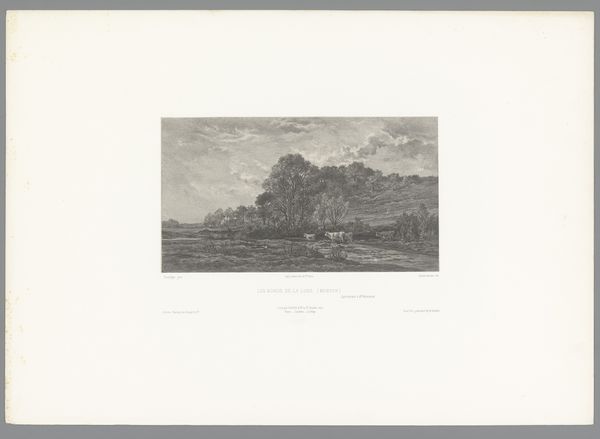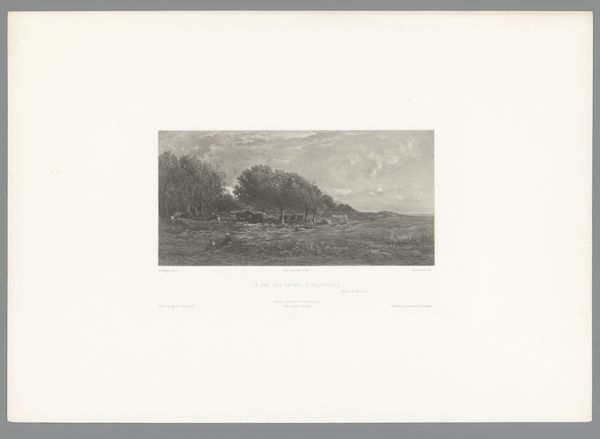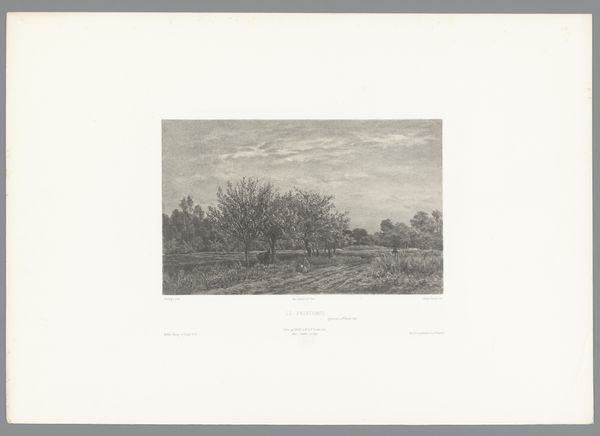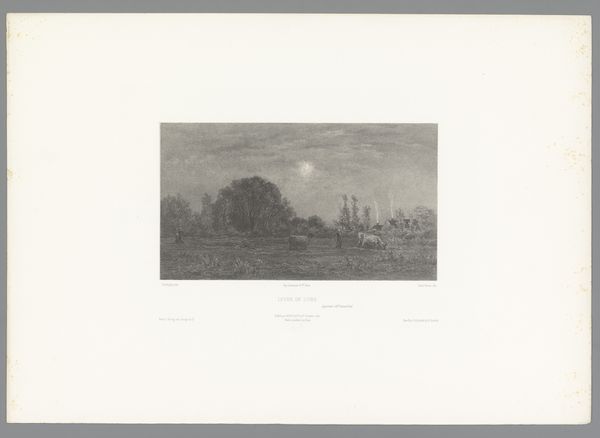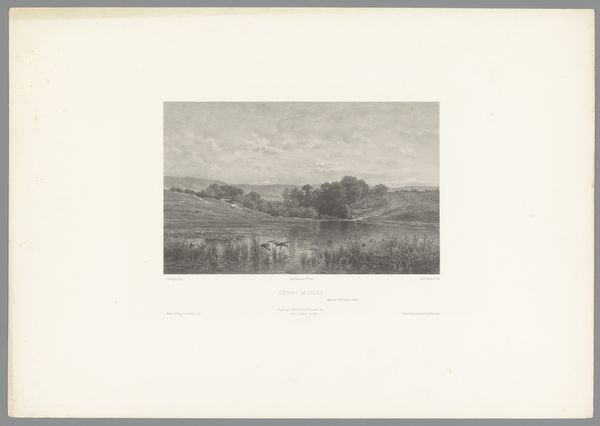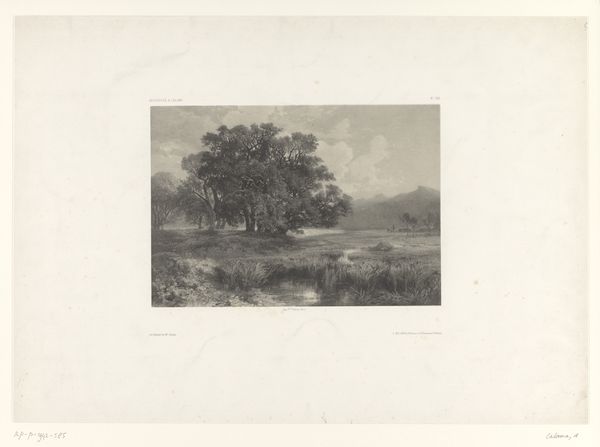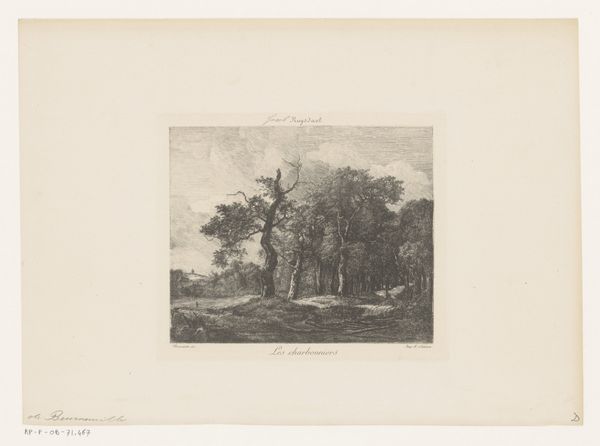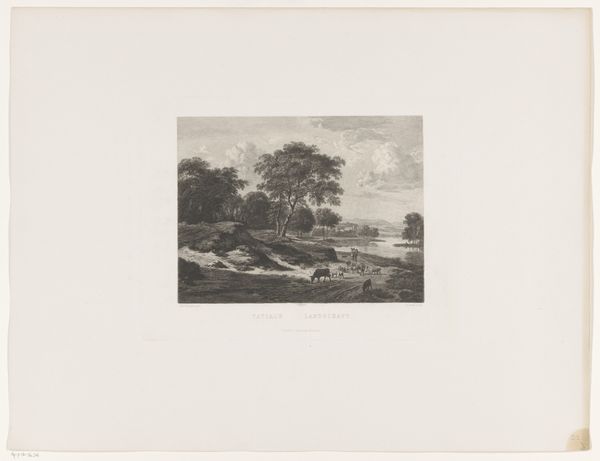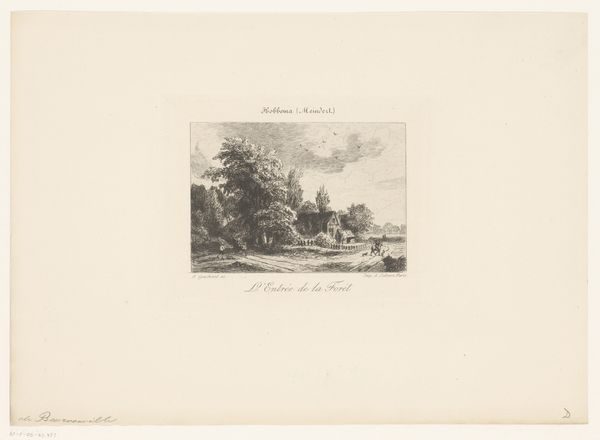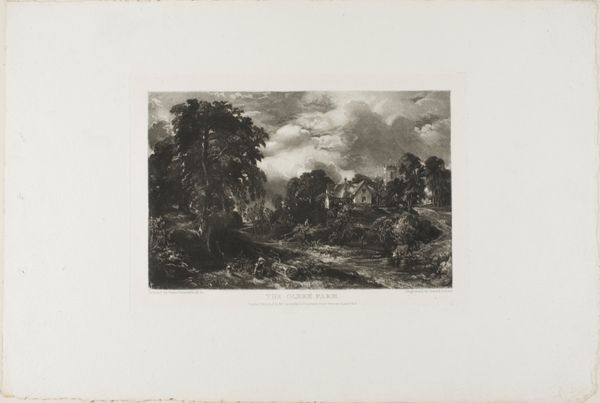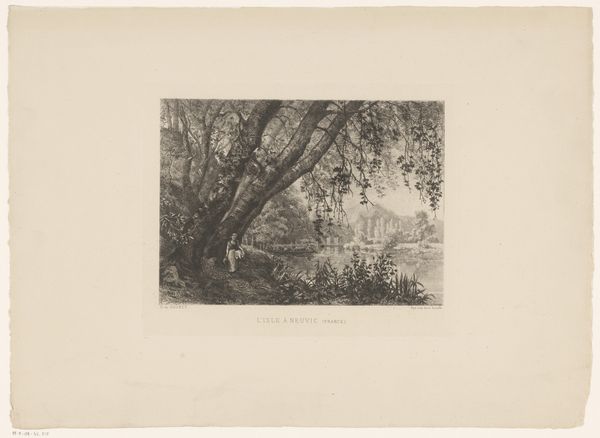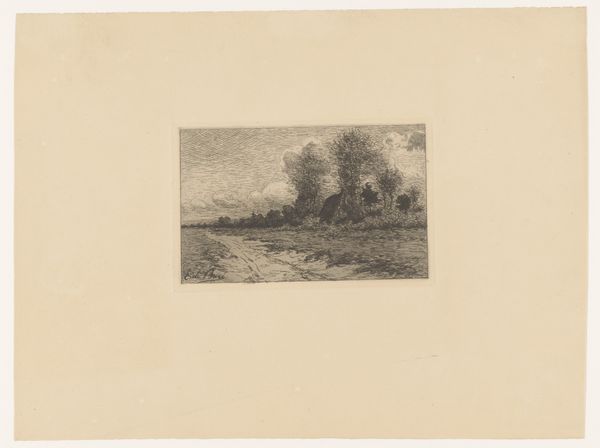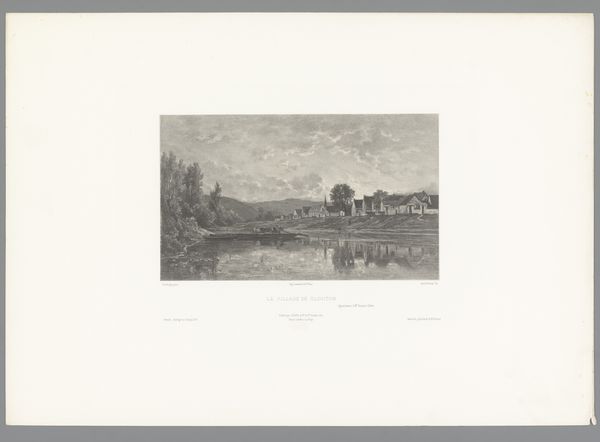
#
photo of handprinted image
#
light pencil work
#
homemade paper
#
pale palette
#
pale colours
#
light coloured
#
hand drawn type
#
white palette
#
personal journal design
#
pale shade
Dimensions: height 401 mm, width 570 mm
Copyright: Rijks Museum: Open Domain
Curator: Looking at this image, I’m struck by a kind of serene stillness, despite the activity hinted at by the birds in flight. It’s a very peaceful, almost melancholic scene. Editor: Yes, it does have a quiet power. What we're looking at is Emile Louis Vernier’s "Waterplas met bomen in de Morvan," created around 1870. It presents a view of, I assume, a small lake or watering hole, reflecting trees. I'm interested in the material qualities—likely a print, judging from the visible textures, perhaps employing early photographic techniques alongside hand-drawn elements on, possibly, homemade paper? Curator: I’m immediately drawn to the interplay between light and shadow, particularly the large tree on the left. It almost feels like a guardian, or a sentinel, overlooking the water. Trees are ancient symbols of endurance and protection, aren't they? Editor: Absolutely, but let's consider how the "homemade paper," if that's what it is, impacts our perception. Was it locally sourced? What sort of labor went into its production? Does the texture subtly alter how we interpret the image, shifting it away from idealized landscapes of the time towards a celebration of the very materials and processes employed in its making? Curator: That's interesting. For me, the waterplas itself is a key symbol—a source of life, a place of reflection. The trees are mirrored in its surface, doubling the image, perhaps hinting at hidden meanings, or the subconscious. Editor: And are these merely reflections of "hidden meaning", or conscious decisions by the artist. Considering Vernier’s world, what printing technologies were accessible to him? What social structures governed the creation and distribution of such images? The fact that it almost resembles a "photo of [a] handprinted image," as one of the tags notes, confuses things wonderfully—it begs the question of authenticity and reproducibility within 19th-century artistic practices. Curator: A fair point, and I acknowledge your focus on the materiality and production. But I also think that we shouldn't discount the emotional resonance. This image feels like a memory, something cherished. Perhaps for Vernier it symbolised a return to nature, a longing for a simpler way of life away from the industrialized cities. Editor: Agreed. And yet, that "simpler life" itself relies upon very particular material conditions and technologies! Thinking about it in terms of labor and economics perhaps it would bring us closer to the original intended emotional affect. Curator: That tension adds another layer to the work, I think. It’s a delicate balance. Thank you for helping me see the work from new material perspectives. Editor: And thank you. Your exploration of symbolic resonance has added an invaluable dimension to my reading of the artwork.
Comments
No comments
Be the first to comment and join the conversation on the ultimate creative platform.
